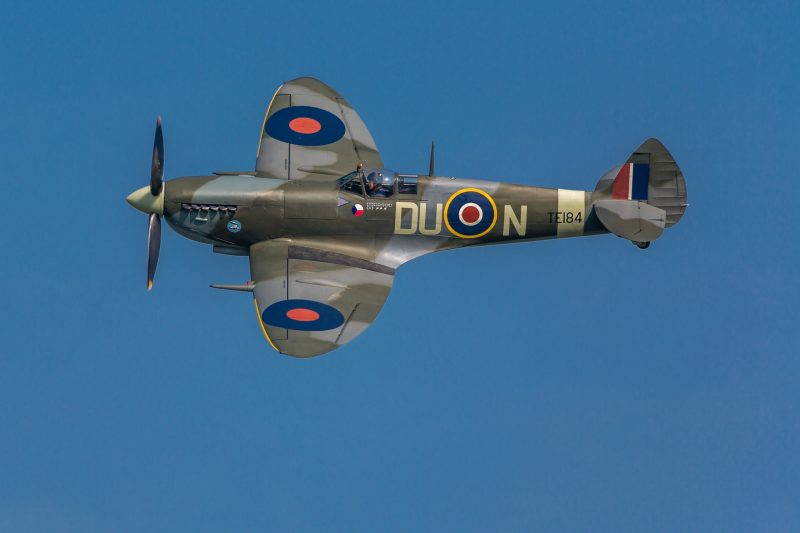The Spitfire was a single-seat fighter plane that served Britain during WWII. Some are still airworthy today, though more are preserved in museums. Unfortunately, at first they had a fatal flaw… one that required a woman’s orifice to fix.
The Spitfire was a miracle of engineering in the 1940s because of its thin, elliptical wings which minimized drag and allowed it to perform impressive aerial acrobatics. Measuring 29’11” in length, 11’5” in height, and with a wingspan of 36’10”, it became the iconic symbol of British resistance during the Battle of Britain.
But it wasn’t just about the looks. Its powerful Rolls-Royce Merlin 45 supercharged V12 piston engine allowed it to reach speeds of up to 347.96 mph (though later models could go as fast as 370 mph), and achieve a rate of climb of 2,600 feet per minute.
A “negative g maneuver” is the technical term for plummeting faster than gravity can pull a plane down, causing those inside it to almost float. Early Spitfire engines couldn’t handle this without their engine dying because their carburetors lacked fuel injection. Every time they dove, negative g would force the fuel out of the carburetors, causing the engine to stop.
Spitfire pilots learned to compensate by half-rolling their planes before diving, but it didn’t always work because the engines didn’t always restart. The Me 109s didn’t have this problem, however, allowing German pilots to dive faster and leave their British counterparts behind.
Enter Beatrice “Tilly” Shilling. An aeronautical engineer and motorcyclist, Shilling bought her first motorcycle when she was 14 and began tinkering with it. She later took up electrical engineering and worked as a scientific officer for the Royal Aircraft Establishment (RAE).
It was she who invented the RAE restrictor – a small metal disc with a hole in the middle. Placed in the carburetor, it addressed the Spitfire’s weakness. In gratitude, pilots called it “Miss Shilling’s orifice” or the “Tilly hole.”
